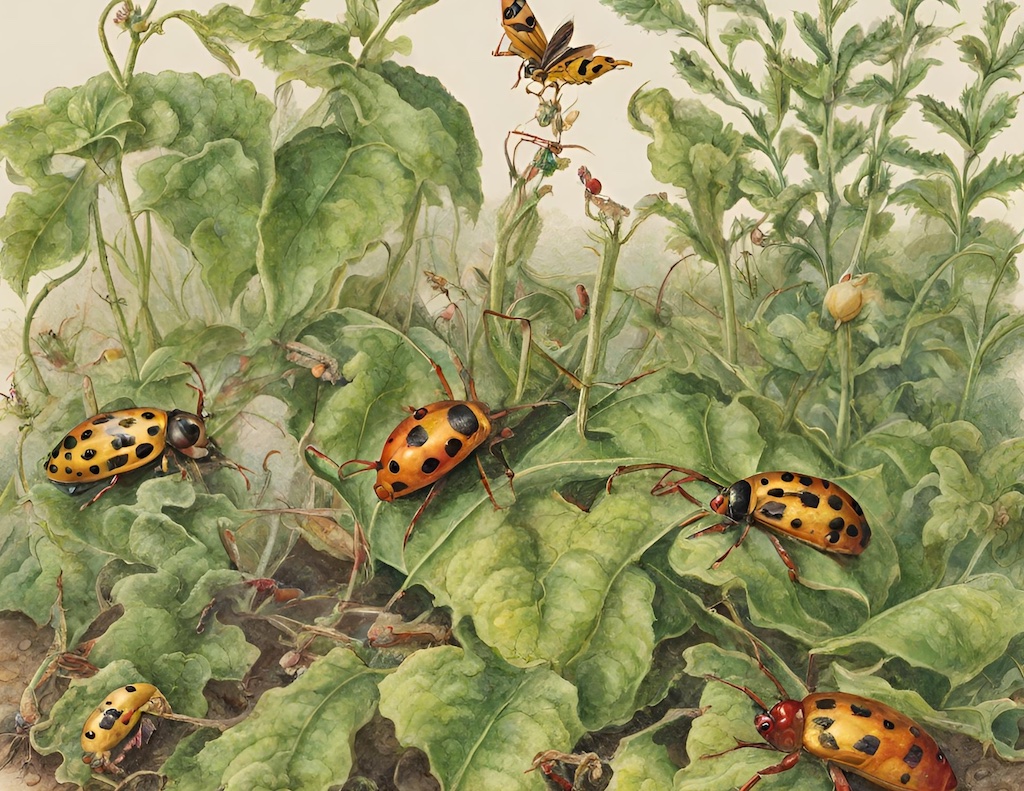There are many reasons why someone starts growing their own food, but none of us start a vegetable garden with feeding pests in mind. Food grown at home tastes infinitely better than the best produce that the grocery store has to offer, and we’re not the only ones who know that!
Every year, customers ask me what the best way to eradicate “X” pest that’s eating their garden. While the market is full of options to repel unwanted guests, there are ways to prevent the word from getting out that you’ve got some amazing tomatoes growing. Companion plants are an excellent way to divert pests without chemicals while promoting a healthy garden.
Companion planting is when two or plants are grown near to each other to prevent pests, increase visits from pollinators, and even boost growth. Many gardeners tend to keep their flower beds and vegetable gardens separate from each other, but planting flowers in your vegetable gardens can be incredibly beneficial. Nasturtiums are both beautiful flowers and edible! Adding the blossoms to a salad mix adds a nice, peppery kick, but also distract caterpillars from cabbage, broccoli, and kale, all while repelling black flies!

Another flowering option to plant in your garden is borage. Borage is a flowering herb that is said to repel tomato hornworms and cabbage worms while attracting bees. While the borage flower is edible, the leaves can contain liver toxins, so don’t eat that. Chamomile is another flowering herb that works double-duty. It attracts ladybugs, wasps, and honeybees and is said to repel my personal nemesis, the mosquito.
Tomato and basil aren’t just great partners in the culinary world, but they are excellent companion plantings. It’s been shown that tall basil can repel thrips, flies, mosquitos, and if planted in rows around tomatoes, it can greatly reduce the number of tomato hornworms. If your basil plant starts to flower, it’s also very popular with pollinators.
It’s common knowledge that garlic repels vampires, but did you know that it also repels aphids, flies, and Japanese beetles? Plant garlic between rows of potatoes as well as alongside lettuces and cabbages and near fruit trees, together with alyssum, to attract aphid-eating hoverflies.
Mint can be a controversial suggestion simply because we’ve all heard to never, EVER plant mint in the ground. While mint repels aphids, ants, and some beetle varieties, I would highly suggest that you plant it in a container. Mint is a very aggressive grower and can quickly overtake a garden if given a chance.
You might have noticed that all these companion plantings have something in common. These are rather aromatic. The aroma of these flowers and herbs disguise the scent that common garden pests are searching for. By incorporating them into your garden plan, hopefully you’ll have a healthy and productive garden this year.
If you have any questions on the best way to handle garden pests, remember that at Randy’s Hardware, we don’t mind your questions! We don’t mind them at all!
































